“I think when you are truly stuck, when you have stood still in the same spot for too long, you throw a grenade in exactly the spot you were standing in, and jump, and pray. It is the momentum of last resort.”
Renata Adler, Speedboat
These are the words which came to mind as I traced the outlines of jagged fissures and scars at Ryan Van Der Hout’s exhibition, Mending Shards. The show is on at United Contemporary through December 21st.
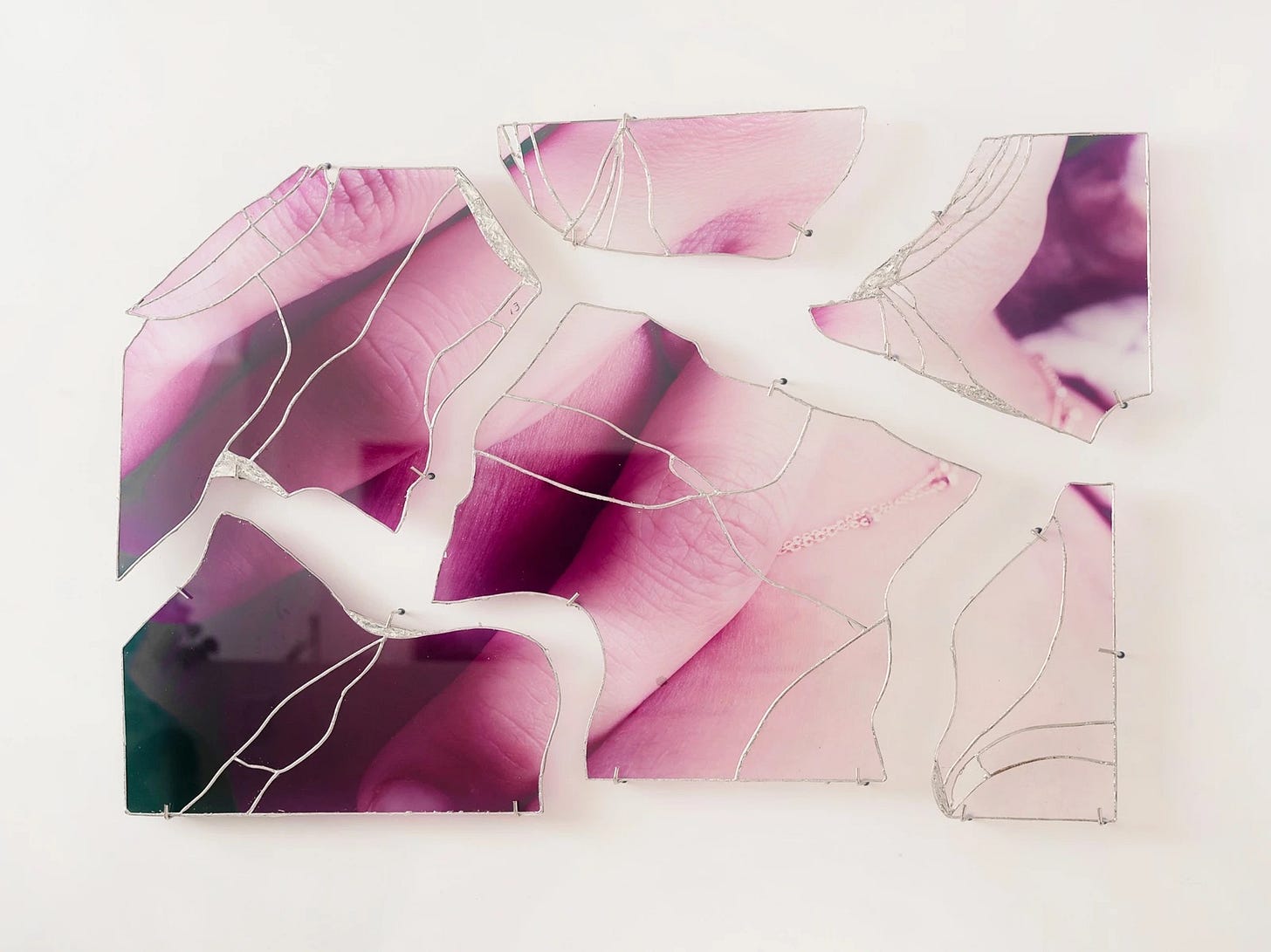
The quote is central to my short story Toy Grenades, in which the narrator desperately seeks to uproot the dull parameters of their life. Their fumbled attempts could be read as a cynical tale about being stuck with oneself; when the narrator self-destructs, what emerges from the ashes seems unchanged. But if I can remain hopeful for Tony’s salvation after 3 seasons of The Sopranos, surely this generosity can be extended to my harmless narrator. Progress is too flattering a term for the direction they’re going, but going they are.

Van Der Hout’s process of creating the works in Mending Shards is a form of grenading the spot you are standing; the artist captures intimate photographs of themself and their peers, prints the images on glass, shatters the glass with unpredictable strikes of a hammer, then reassembles the shards into collages intertwined with monochrome fills and negative space.
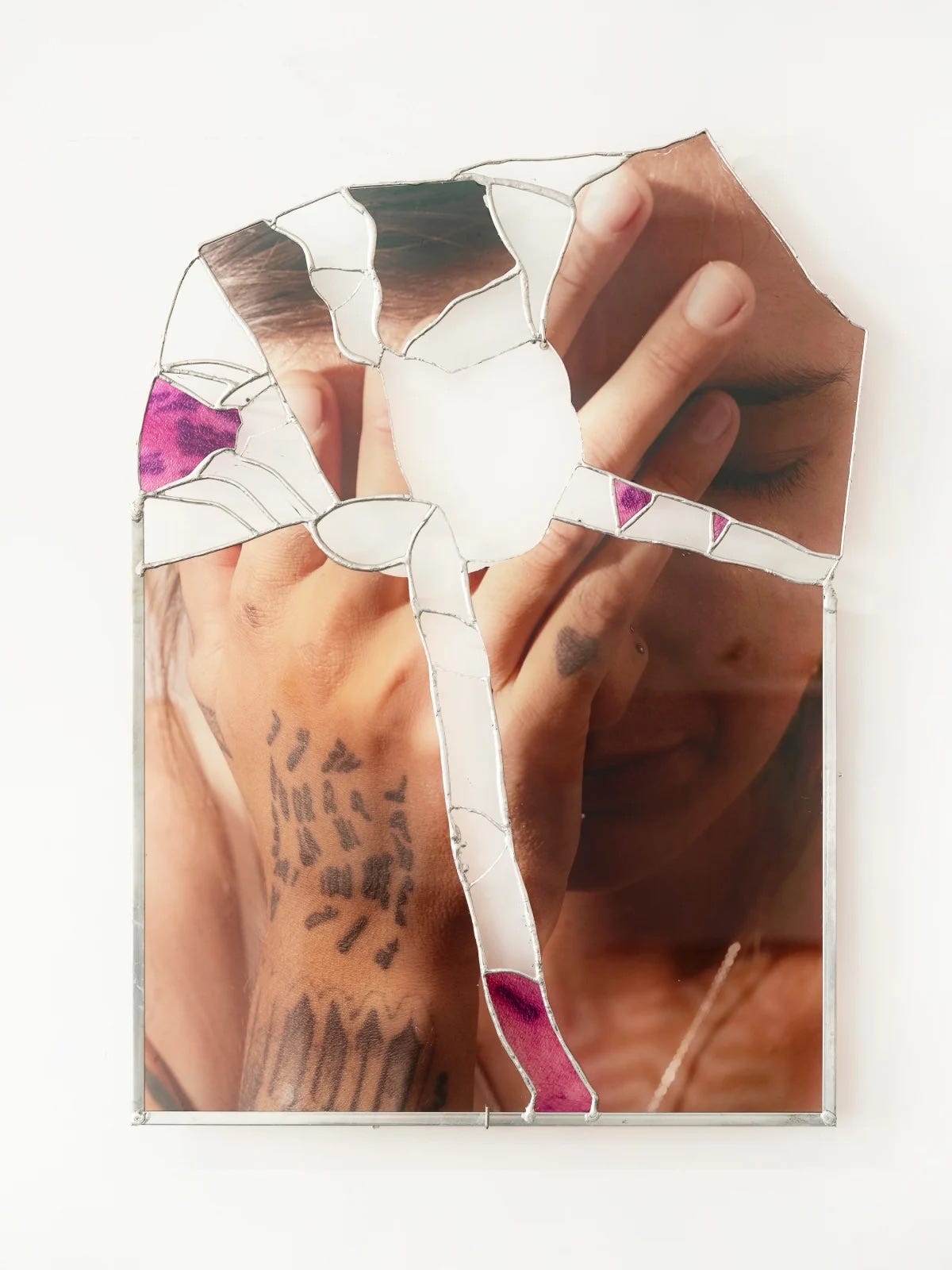
There is little control to be had over the ways in which we (or the things around us) crumble, nor in the paths taken to reconstruct. In this sense, Van Der Hout’s deliberate re-assembly of the broken pieces is somewhat utopian; one luxury of being an artist is having a world in which you control the outcome. But to the artist’s sage acknowledgement, the outcomes of these works are far from “perfect”. Shattered glass is an overt symbol of defection and failure. The close-ups of subjects in the glass reveal pores, blemishes, nose hairs, and other intimate features that few people are comfortable sharing.
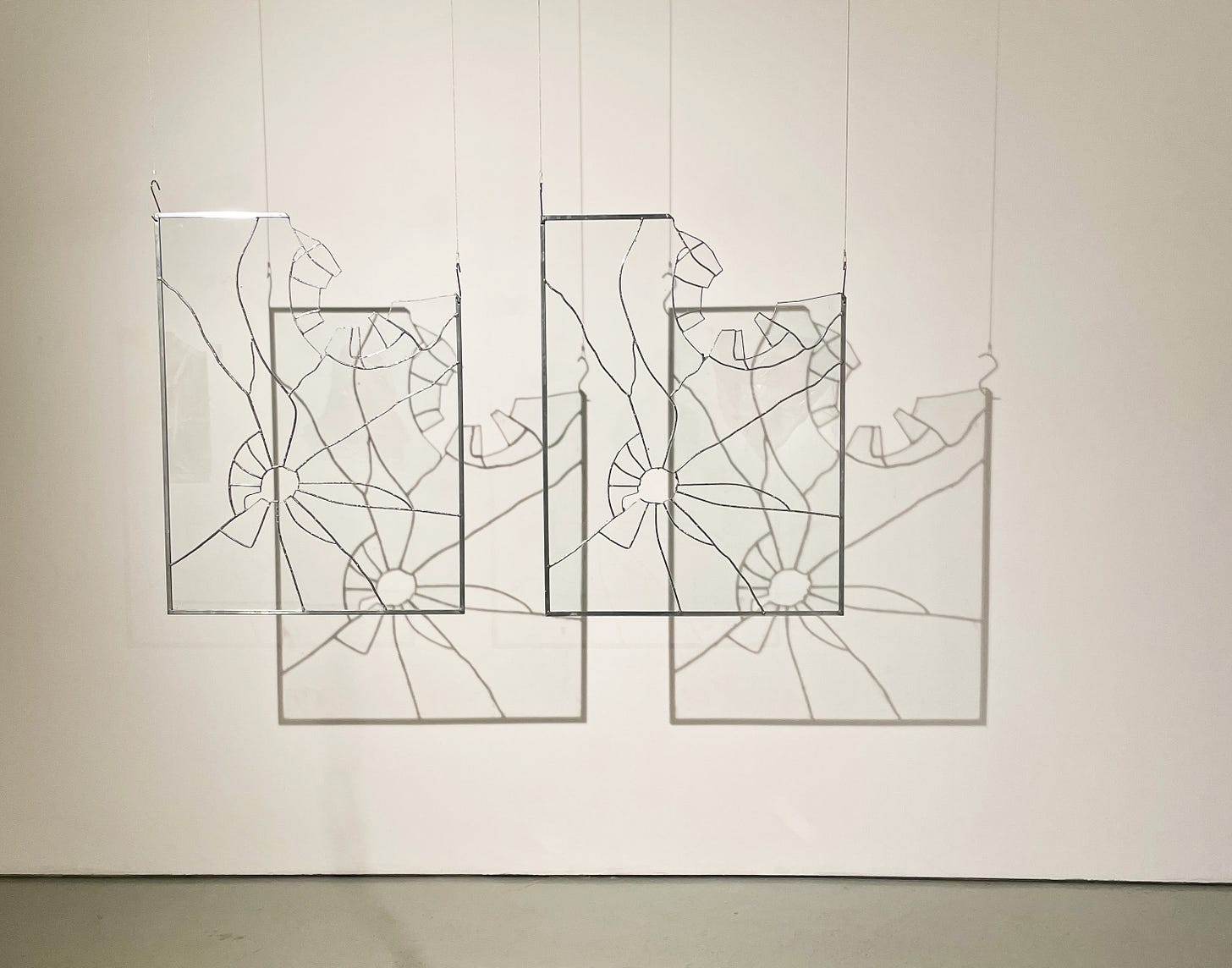
The artist continues to muse on perfection and control in Twice Broken Glass. The first piece was developed per the normal process: spontaneously broken, intentionally reassembled. For the second, the artist attempted to duplicate the fractures of the first by hand-carving the glass. At a glance, the pieces are identical — but this is a mere illusion of control. I imagined the artist repeating this process, duplicating the previous piece and continuing along the gallery wall, wrapping around the space until arriving back to the original. Like a game of broken telephone, the final and original structures would be starkly different.
There is a sense of futility in attempting to document and control these minute changes. Acceptance is abandoning the urge to force process into pattern, pattern into progress. Taking a step back, the free-hanging steel supports and fissures mingling with their shadows on the wall is breathtaking.
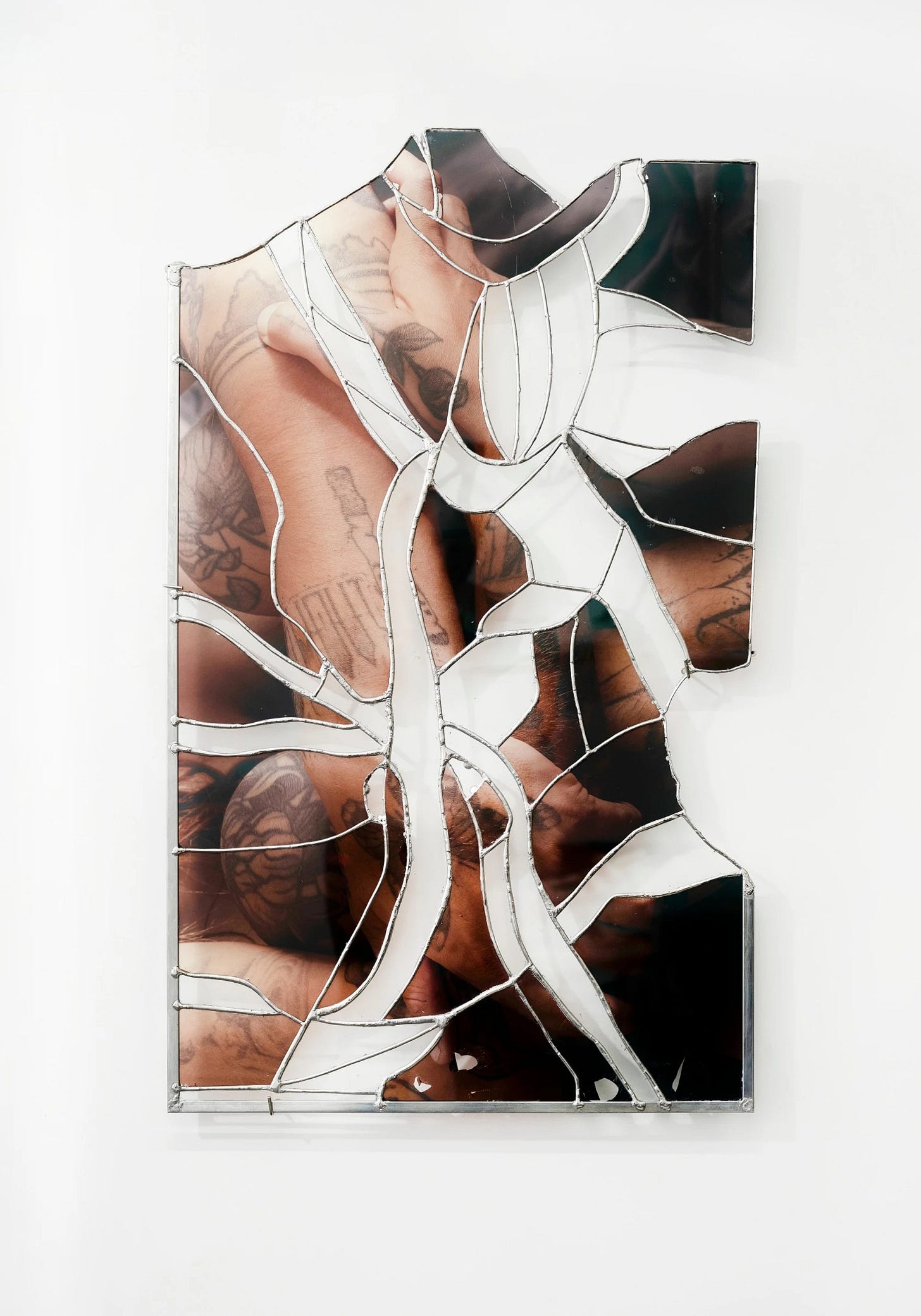
In my previous essay, I referred to the human shadow as a metaphor for the idyll of an unfiltered, untarnished self. Given the doomsday tenor of election coverage, my inward retreat and assertion of self-as-refuge, unfettered by political (and other) entities, was predictable. In the face of events outside of my control, I took shelter in ritual; perhaps the most fascinating ritual is the construction of self.
Mending Shards takes a hammer to this brittle utopia with the reminder that selfhood is a mangled collection of odds and ends. Importantly, this is not cynical, or a rejection of self; it is encouragement along a Sisyphean cycle of destruction and repair. The stained-glass quality of the work and the magenta lighting in the gallery harkens a cathedral. Here, ritual is the shattering of the closely-held self, the donning of your shards, and trusting them in the hands of another. The vulnerability of this process breathes intimacy into the room. This is felt regardless of whether the images are portraits of the artist’s self, their peers, or romantic partners.
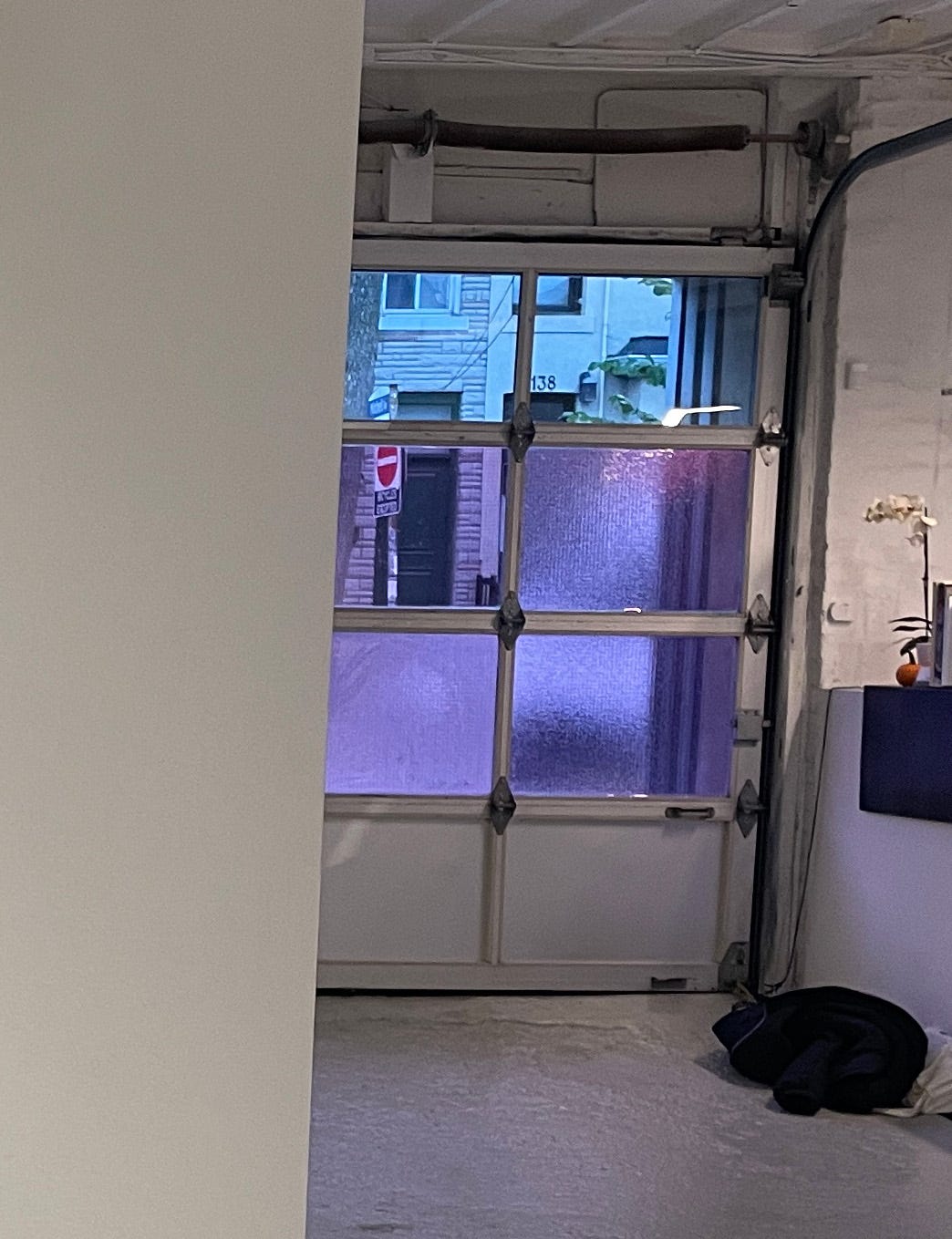

After viewing the exhibition, I had a nice conversation with the gallery director, Melanie. I told her about my craving to see the original, unbroken photographs, even at risk of diminishing the poignancy of the finished pieces. Of course, this perfectionist instinct was not indulged, nor should it be. In the instant following the click of a shutter and depositing of pixels on a hard drive, the subject is reassembled several times over. If these works tried to reclaim the wholeness their subject was, at the expense of the transient mess we always are, there would have been so little to write about.
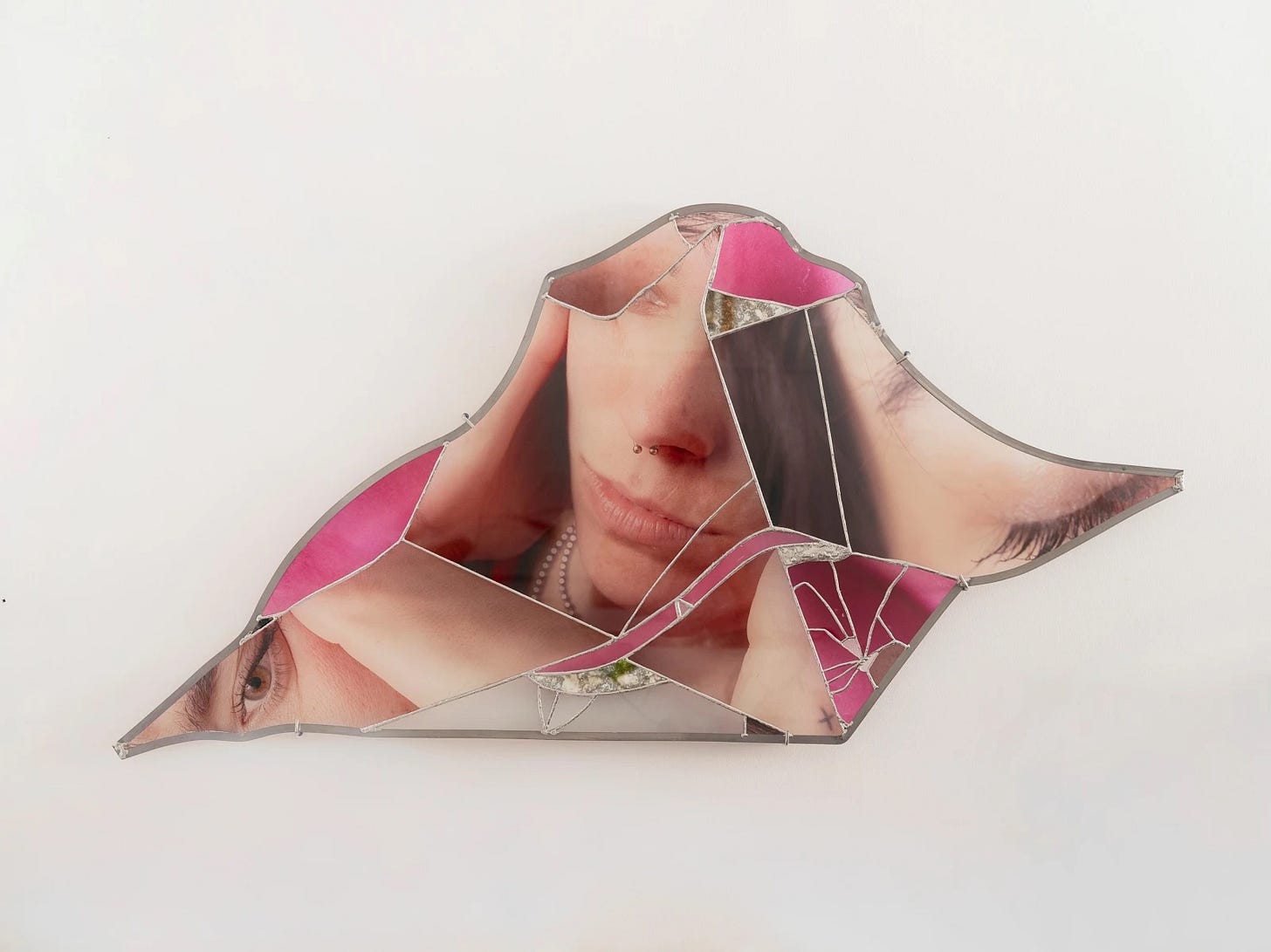
postscript
United Contemporary is doing great work. The exhibitions I have been lucky to catch feel deeply fulfilled, both via the individual works presented and their broader concepts. My intention was to avoid covering shows by the same gallery in close succession (I’ve already written about Meghan Price’s exhibition, Through Line), but the excellent programming forced my hand.
You also might have noticed from the images that, despite professional documentation, these works are difficult to photograph. Readers will know by now that I have a soft-spot for ephemerality and art that cannot easily be captured online. Writing on a platform which seems to be ever-more crowded with LinkedIn guru content, perhaps this comes from a place of envy. If only the self-destructive cycle of social apps could result in something as precious as Mending Shards.
Ryan Van Der Hout | Mending Shards
United Contemporary
November 14 - December 21, 2024
All images courtesy of:
artist, Ryan Van Der Hout (instagram / website)
gallery, United Contemporary (instagram / website)








You are very talented! The art is cool thank you for mansplainng it to me.